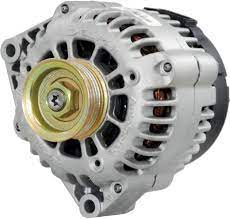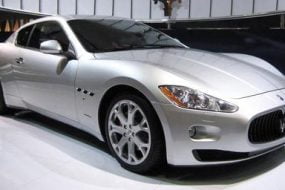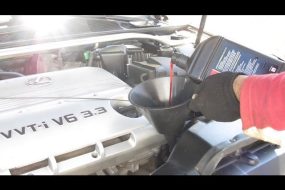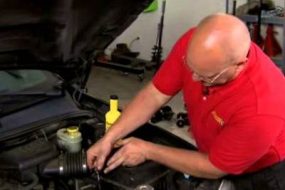
The work of an alternator is to charge a car’s battery when it is being driven and at idle. A major influence on an alternator’s ability to charge the battery is the RPM.
Revolution Per Time (RPM) measures how fast an engine’s crankshaft rotates per minute. Depending on an alternator’s specification, it may be difficult for it to function well at low RPM. Despite this, there are effective ways of making the alternator charge at low RPM.
Therefore, to make an alternator charge at low RPM:
- The size of the alternator’s pulley should be reduced
- The number of turns in the alternator’s coil should be increased
- The engine idle speed should be increased
- Adjust the relay gap, and
- Propel the alternator using a smaller belt.
Can a Car Charge at Low RPM?
Yes, a car can charge at low RPM although the charging may be slow and not last long. It is important to note that what is considered a low RPM by cars varies and depends on the alternator’s precision.
How to Make an Alternator Charge at Low RPM
This is how to make your alternator charge at a low RPM:
1. The Size of the Alternator’s Pulley Should be Reduced
One way to make an alternator charge at low RPM is by reducing the size of the alternator’s pulley.
Reducing the pulley allows the alternator to run faster at the same speed. Even if the RPM is low at this point, charging will take place because the alternator is running fast.
2. Increase the Number of Turns in the Alternator’s Coil
An increase in the number of turns in the coil of the alternator is another way to make the alternator charge at low RPM.
By increasing the number of turns in the coil there is an increase in voltage which enables the alternator to charge.
This however doesn’t mean that when there is a decrease in the number of turns in the coil, the alternator will not charge.
3. Engine’s Idle Speed should be Increased
An effective way to also make an alternator charge at low RPM is by increasing the engine’s idle speed. Although this works, there are downsides to using this method such as; fuel wastage, engine wear, and tear, etc.
4. Adjusting the Relay Gap
You can as well adjust the relay gap of the alternator. Relay gaps are most likely found in an alternator’s regulator. Once this is done the alternator should be able to charge at low RPM.
5. Propel the Alternator Using a Smaller Belt
The alternator can also be propelled by using a smaller belt, you may need to do this manually. Propelling the alternator manually makes it run faster and it in turn charges even at low RPM.
6. You May Need to Broaden the Range of the Alternator
Broadening the range of the alternator is another way to make the alternator charge at low RPM. To broaden an alternator’s range mean you are transmitting more power into it than it already has, to do this you will need an electric clutch.
At What RPM Does an Alternator Start Charging?
The RPM at which an alternator will start charging depends on the type of alternator the car use, it also depends on whether the car is idling or running.
An alternator can start charging when the RPM is between 500 to 1000 at idling speed or start-up speed. In some cars, once the RPM is up to 1000 the alternator starts charging and continues doing so even when idle.
While some car alternators can charge with low RPM, some others perform poorly especially when accessories in the car are in use.
What is the Minimum RPM for Alternators?
The minimum RPM for an alternator depends on the alternator itself and its specifications, however, irrespective of the alternator the minimum speed should be around 2400 rpm or less in some cases.
Taking the 12 volts alternator for instance its minimum RPM is 1800 when starting up. The minimum RPM when idling is stated to be between 750-1250, although this is higher in a 24 volts alternator.
What Should my Alternator be Charging at Idle?
What an alternator will charge at idle varies and can be influenced by factors such as; condition, age, etc. All things being equal i.e. given that the alternator is in good condition and not reaching the end of its life span, the alternator should charge 14 volts when idle.
To better test this you can increase the revs to around 2000rpm, doing this will either show a maintained volt level or a slight reduction to 13 volts.
Does Revving the Engine Charge the Alternator?
Yes, revving the engine can charge the alternator but the amount of power that will be produced depends on whether the revving was fast or not.
Revving an engine faster is a good way to quickly charge the alternator, this is because at this point the crankshaft and belt that runs the alternator also run faster and in turn produce more electricity.
Although revving the engine charges the alternator, it is not advisable to do so all the time or with a weak battery. Also, charging the alternator by revving the engine is not a bad idea, especially when jump-starting a car.
How Long Does an Alternator take to Charge a Battery at Idle?
The length of time it will take depends on whether the battery is in good condition, completely dead, or partially low.
Irrespective of this, however, it usually takes an alternator longer to charge a battery at idle than when it’s running, this is because when idling the car doesn’t get the required charging power provided by highway speed.
It may even take longer than it should if some accessories in the car are in use. Therefore, if you want the battery to charge faster at idle switch off all accessories in the car.
For a completely dead battery, the alternator should be able to charge close to 80% within 2hours all things being equal.
Does an Alternator Charge More at Higher Revs?
Yes, an alternator charge more at higher revs.
Revving a car may be necessary to increase the power produced in an alternator, however, if you want the alternator to charge faster, you may need to rev faster and higher. Higher and faster revving has been known to charge an alternator faster than when done slowly.
When the engine is revved higher, the crankshaft and belt that move the alternator also move faster and, in the process, more electricity is produced. More electricity in turn makes more power available in the alternator.
Conclusion
Although it is possible to make an alternator charge at low RPM, it will be unsafe for the alternator if you do this all the time as it could lead to wear and tear and also reduce the alternator’s life span.









